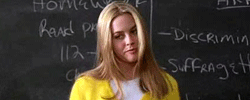Reviews
Mike Nichols
USA , 1988
Credits
Review by Leo Goldsmith
Posted on 04 July 2006
Source 20th Century Fox DVD
Categories Chick Flicks
Working Girl both begins and ends in the air. The first image is a close-up of Lady Liberty herself, presiding over New York Harbor; the last is a slowly receding shot that finds working girl Tess McGill, newly graduated from cubicle culture to her new office, then tracks back to place her in the broad skyline of New York City.
The conceit is a common one and, as such, is perhaps a tad over determined. In gangster films, the hero looks upon the skyline of his city as something he, in his hubris, believes he possesses. In the chick flick or women’s picture, the city is menacing, oppressive, and masculine. But here the skyline is partly feminized. Our downtrodden heroine gazes wistfully upon the Statue of Liberty from the deck of the Staten Island ferry on her way to work each morning, longing to turn the monumental platitudes of opportunity, free choice, and the American Dream into realities. Coupled with Carly Simon’s propulsive gospel-world beat score, which heralds a most unlikely “New Jerusalem,” this imagery softens New York’s dark satanic mills with Lady Liberty’s countenance divine.
But Tess McGill is not quite one of the tired, poor, and huddled masses. “I am not steak,” she insists. “You can’t just order me.” Tess is intelligent, plucky, and, in the parlance of 1980’s Wall Street, “hungry.” Unfortunately, she is also a buxom blonde from Staten Island, so she spends more time fending off unsubtle advances from overpaid, coked-up Brooks Brothers types than she does advancing her own career. Despite her head for business, Tess is also, as she notes, both blessed and cursed with “a bod for sin,” albeit one adorned with a pirate’s horde of gold jewelry and crowned with a good deal of hairspray.
Once she is unceremoniously fired from her job working for a pompous (and notably trim) exec played by Oliver Platt, Tess seeks a secretarial position under Katharine Parker, an uptown rich girl currently navigating a successful ascent on Wall Street. Played with relish by Sigourney Weaver, Katharine morphs from polite to snooty to downright villainous, condescendingly offering to take Tess under her wing with the advice to “rethink the jewelry.” Of course, it’s not long before Katharine makes off with Tess’s savvy business ideas behind the lowly secretary’s back.
Thanks to a most opportune skiing accident, however, Katharine soon becomes laid up with a broken leg, which affords Tess the opportunity to make good on her own ideas. This instigates Tess’s Tom Ripley-like transformation into a clone of her boss, donning her boss’s $6,000 evening gown (“It’s not even leathuh!” exclaims the even more deeply Staten Island-sounding Joan Cusack as Tess’s friend, Cyn) and attending an executive cocktail party to woo Katharine’s colleagues in the business world. These include Jack Trainer, a handsome, aging yuppie in the person of one Harrison Ford, who is not only the ideal man to help execute Tess’s complex assault on the business world, but also a darned dashing fellow. Ford seems a somewhat unlikely choice for the role of a stuffed pinstripe, but his mix of irony and awkwardness makes his budding romance with Tess sufficiently credible. But business-head and sin-bod notwithstanding, Tess is reticent to mix business with pleasure, especially with the sort of starch-linen businessman who, in her secretarial career, would most likely have treated her like a servant or chased her around his desk.
Of course, one watches films of this kind to see business and pleasure mixed, and mixed they are. Alongside all of the business machinations, there is plenty of sexual intrigue, most of which involves Melanie Griffith in some state of undress. Indeed, what is interesting about the film is that it lobbies passionately for Tess’s agency, intelligence, and shrewd business-sense — it is, after all, eighty-seventh on the American Film Institute’s list of the “100 Most Inspiring Movies of All Time” — and yet still manages to find time to ogle her “bod for sin.” Perhaps the film’s most memorable image is not of Lady Liberty but of Melanie Griffith vacuuming topless. (This element was, for obvious reasons, lacking in the TV sitcom adaptation of the same name, starring Sandra Bullock.)
If Tess is not quite a steak to be ordered, the film nonetheless treads a fine and often ambiguous line with regard to her sexuality. No doubt Tess is conflicted by the way in which she uses her body to influence her relationship with Jack Trainer, but the film itself does little to expunge the indelicacy of this for either her or the audience. Necessarily, the film concludes with Tess owning up to her deception, exposing Katharine’s fraud, and, in the honest wardrobe of jeans and t-shirt, proving her worth to her lover and to her employers. But the question of how far she has come remains. She is rewarded with an office and an “assistant” at the end of the film, though both are noticeably shabbier than in her former, falsified position. And even Jack, her affectionate insider, her loving “trainer,” bestows upon Tess a metal school lunchbox (complete with an apple for the teacher and an admonition to “play nice with the other kids”) on her way to her first day at her new job. This gesture rhymes ironically with a similar one earlier in the film, in which, thinking her a legit career woman, he bought her a leather briefcase. Thus, the film’s conclusion, framing Tess in the window of her new office and then against the vast, impersonal skyline of New York, can be read either as a realization of her professional aspirations or as the completion of her transformation from working girl to career woman to little schoolgirl.
More Chick Flicks
-

The Truth About Cats & Dogs
1996 -

Say Anything
1989 -

Gas Food Lodging
1992 -

Pretty Woman
1990 -

Walking and Talking
1996 -

Mean Girls
2004 -

Fried Green Tomatoes
1991 -

Private Benjamin
1980 -

Clueless
1995 -

Erin Brockovich
2000 -

The Bridges of Madison County
1995 -

Bridget Jones’s Diary
2001 -

Working Girl
1988 -

Bend It Like Beckham
2002 -

Bring It On
2000 -

Ghost
1990 -

Truly Madly Deeply
1991 -

The Last of the Mohicans
1992
We don’t do comments anymore, but you may contact us here or find us on Twitter or Facebook.



